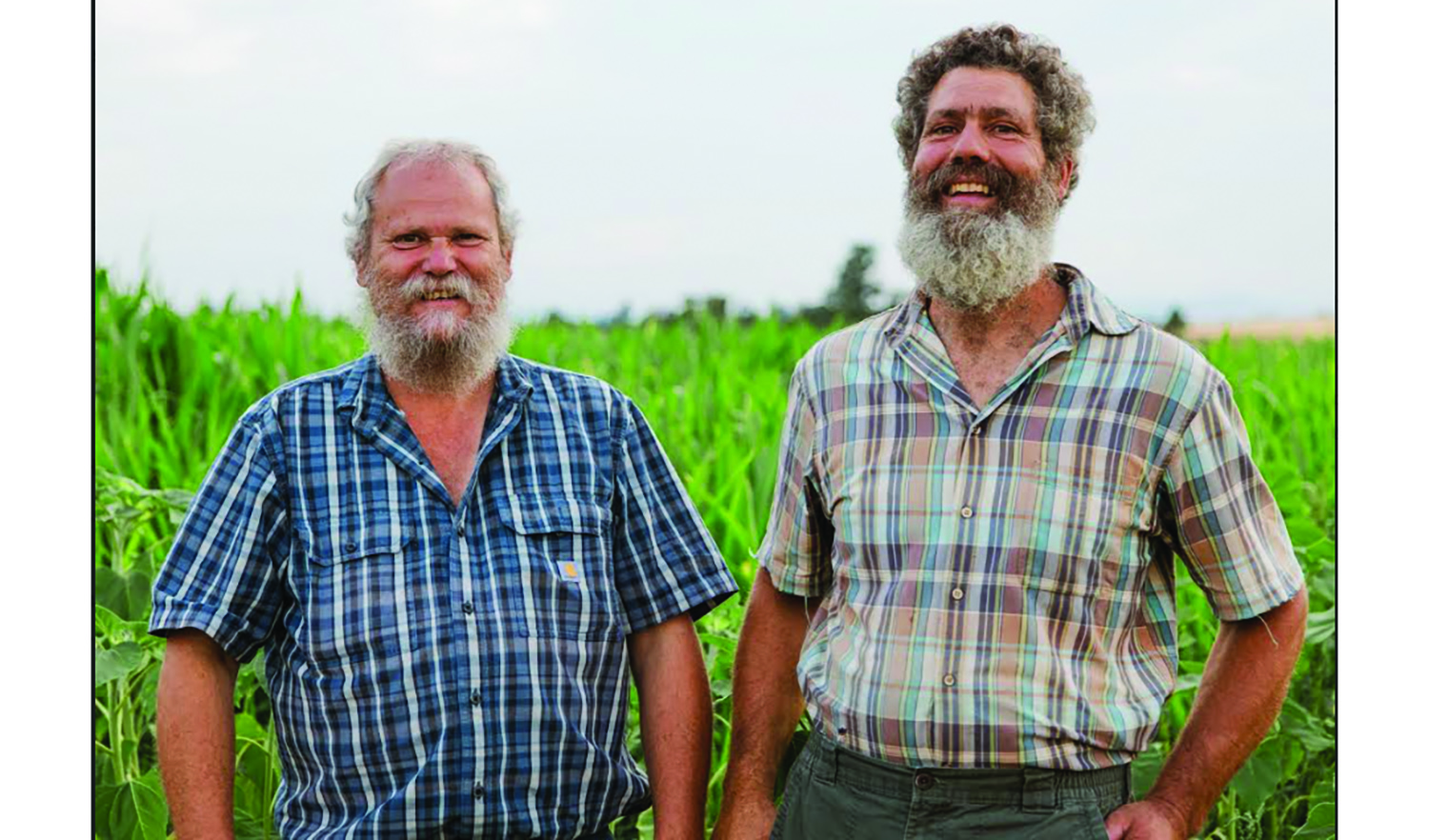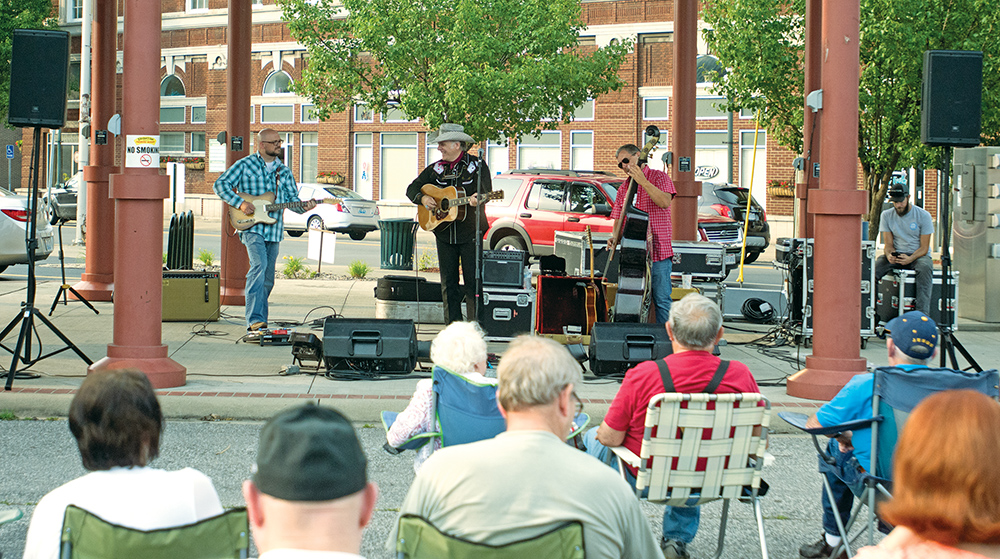PROFILE 2012: Living history
Published 10:03 am Thursday, March 1, 2012
SOUTH POINT — South Point resident Goble Caudill will be 90 this year. A member of what Tom Brokaw called “the Greatest Generation,” the soft-spoken World War II veteran and retired industrial engineer has been married to his wife Mary Alice, 86, for 66 years.
His life, he says, has been “long and very blessed.”
Caudill was born in Magoffin County, Ky. near the community of Falcon in 1922, the son of a blacksmith. After graduating from Salyersville High School, in the spring of 1940, he decided to make his way to the big city of Ashland, Ky. to look for work.
He landed his first job at the Capital Theatre, taking tickets at the door for $1 a day. After 11 days, he found another job with Armco at their covered works facility along Greenup Avenue. It paid considerably more, Caudill recalled. It was during his tenure there that the Japanese attacked Pearl Harbor and the United States entered World War II.
Like most young men at the time, Caudill wanted to enlist immediately but his parents strongly discouraged him, saying he was too young to join the fighting. He continued working, waiting for his time to serve. Eventually he took a job as a carpenter’s helper building the Allied Chemical Plant in South Point.
A few months later, he was drafted to serve in the U.S. Army.
Before departing, Caudill went home to visit his parents where he learned his neighbor Ralph Preston, was also drafted. The pair grew up together and knew each other well.
Preston “lived across the hill” from the Caudills’ home and the next morning Caudill’s father, Paul Tom Caudill, drove the pair into Salyersville where they caught Luther Conley’s bus to Paintsville. From there they took the train to Covington, Ky., enlisting at the Army post there.
“We went in together. They took us in together and put us in the same Army division,” recalled Caudill. That division was the 9th Armored Division, whose insignia Caudill ensures he pins onto his sport coats whenever he wears them.
Caudill eventually became a radio operator and Preston an infantryman.
After leaving Covington, the division went to a base “in the middle of the United States,” whose name Caudill has lost to time.
From there, his unit went to Camp Needles in California, which Caudill said was “as hot a dessert as I’ve been to and since then I’ve seen three” before being sent to Camp Polk near New Orleans for invasion training. Eventually, his unit was sent to New York City to await deployment to Europe.
In the fall of 1944, Caudill and his unit made the voyage across the Atlantic aboard the Queen Mary, then one of the largest ocean ships in the world. Before being used to transport troops to Great Britain and back, the vessel had been one of the finest luxury liners in the world.
“They had 20-some thousand people on the boat. It was the fastest boat on the water,” Caudill recalled. “We left New York and went to England in five days. They didn’t send anybody to guard us because no boats the Germans had could keep up with us.
“We went all the way to England and there was nowhere large enough to dock that boat. So they stopped it out in the water and started unloading us.”
Several weeks later, the 9th Armored Division crossed the English Channel, landing in Normandy, months after the surge of Allied troops had stormed its beaches on D-Day.
“We come straight on into Paris, France,” Caudill said. “The city was full of women. Just full of women. (Just outside Paris,) we took a left turn and went on to Bastogne, Belgium. That is where the fighting had been going on for some time. They had one division there. This was near Christmas, that year.”
The “fighting” was the beginning of the Battle of Bulge, the largest and bloodiest battle fought by American troops in Europe during World War II.
“We were there two days, and (the Germans) they had the town totally surrounded,” recalled Caudill. “They had the road blocked there and we were specialists in that. So we went out to open the road back up and chase the Germans a few miles, they were leaving north of town.”
By this time, Caudill had been assigned to C Company in the 9th Armored Division’s Engineer Battalion. He, along with four other men, set out on their half-track carrying the company’s only radio equipment, which on a clear day could communicate for up to 100 miles, he said.
“By the time we got there, they told us to stop and come back to Bastogne,” Caudill recalls, this memory still vivid after 67 years. “We started back from the road block and we got back three or four miles and the Germans had gotten behind us and we couldn’t go any further. There was a whole bunch of fighting going on.”
His commander ordered the half-track off the road, thinking the group could wait out the fighting overnight and head back to town in the morning.
“The next morning at daylight the Americans were still there, coming back down the line. They came back pretty fast. About daylight a tank came down on the right side and came real close to us and hit our right wheel. It caught the hub cap — it was real heavy and it lifted that vehicle up real high — about as high as your head. And it (the hub cap) come off,” he said, raising his hand in the air to demonstrate then pausing before bringing back down to his side.
“We got out of the road then. There were too many of them getting killed and we went up this little hollow. There were a lot of Germans coming by and things going on…”
The men hid as the fighting only continued to intensify around them. At daylight the next morning, an American officer stumbled onto their encampment.
“He said, ‘Fellas we’re surrounded down here. We need some help. We need your help. We need everybody’s help, so come on down and help us get out of this mess. We’re in a bad mess. It’s mixed up. There is no kind of organization,’” Caudill remembers the officer saying before the man headed back toward the fighting.
“I stayed there for a little while with these other four guys, after the officer asked us to go. And I thought, ‘We’re in bad shape,” Caudill recalled. “I waited and none of the other guys spoke to me, or anybody. They never even spoke. And I finally said, ‘Well I’m going to find out.’ I stood up and turned around and said, ‘What are you going to do? This guy asked us to help. Are we going to help or what are we going to do?’
“They looked at each other and never spoke. I sat there for three or four minutes and they never did speak. I thought ‘Well, I’m here to fight.’ So I got up and took off in the same direction the guy had asked us to go. The other guys, they stayed where they were hiding.”
Not far down the road, Caudill found a large group of soldiers organizing themselves into groups of about 50.
He was assigned to one such group, recalling he was the only member of C Company around. The men set out amid the heavy fighting to clear another road of Germans.
“We got down to where there were only 12 of us left,” Caudill recalled. “At the very end of the fighting we got close to them (the Germans) and the Americans were in behind them. We got up on top of the hill and we could see the Americans down on the other side. They were the 101st Airborne,” he said, adding, “That was a good fight,” a grin spreading across his face at the memory.
But before the group, who had been fighting for three days without food or sleep, could reach their fellow soldiers, they spotted three Germans climbing the hill toward them.
“They had the parts to a machine gun. One of them had the barrel and the other had what we called the works, and the other had ammunition and they go marching up the hill, real slow. They come up to the edge of the woods we was in. They were within 10 feet. They turned there and came walking straight into the woods at us,” Caudill recalled, his face suddenly drawing tight.
“We all hit the ground and started firing. Two of them fell. The one that had the barrel, he threw it off and went straight over the hill. I laid there, and I had a funny feeling of being an old time guy – You never shoot a guy in the back. I was a soldier, I was trained to kill ‘em and take care of ‘em and do whatever, but I stopped firing. I had dead aim at him and I stopped firing. Whenever I got ready to pull the trigger I wouldn’t do it.”
Eventually, after this last skirmish, his group reached the line of 101st, who at first treated them with skepticism and forced them to come into the line one at a time, hands above their head. After questioning, to ensure they truly were Americans, the group was sent for a meal at a captured German home.
There the men witnessed a German doctor operating on two severely injured German officers, using the home’s wooden kitchen table as the operating table. From there they were put in a hospital jeep and transported along with the captured German officers to an American hospital inside Bastogne.
After falling asleep atop a pile of potatoes in the hospital’s basement, Caudill awoke to the sounds of a familiar voice — a soldier nicknamed Poker Jack from C Company.
“The rest of my company was parked up the street just a bit from me. I got up the street and there was my half-track. I walked up the road just a little bit more and ran into the rest of my platoon. They said, ‘Where have you been?’ Everybody asked the same question. I told them I’ve been up the road and I’m the only one left,” Caudill said.
He was indeed the only radio operator from C company left. The four soldiers he had started out with and had left behind in the hollow to join the fighting were never found. To this day, they remain missing in action.
For the next 26 days, the siege of Bastogne continued. Caudill and his unit played a prominent role in the defense of the city. After the siege they were awarded the Presidential Unit Citation for their efforts.
When the Battle of the Bulge finally ended, C Company would spend several weeks traveling south to catch up to the rest of the 9th Armored Division.
After rejoining them, the division would stumble into another battle that would write them onto the pages of history books.
While marching toward Berlin, the 9th Armored Division discovered the last intact iron bridge over the Rhine River — the Ludendorff Bridge at the town of Remagen.
“We were the closest to it,” Caudill recalled, “They told us (C Company) to go to it and get that bridge. But before we got there, B Company of the engineers, they cut in front of us. They went on and captured the bridge from the Germans. We went up to the bridge and helped them out,” he said, noting B Company was eventually sent across the bridge.
“They sent our company, C Company, onto the bridge. We stayed on it for three days,” Caudill said, adding the company was allowed to rest for two days before being sent over the bridge to join B Company en route to Berlin.
“Boy, everybody in the whole country was headed for Berlin.” There was a little river about 20 miles south of Berlin. We went there and stopped. There wasn’t anything on this side of the river but on the other side — Oh! the Russians and the Germans were a-fighting. We were there for about three days and the Germans surrendered,” Caudill recalled, leaning back into his chair and becoming silent.
With the war in Europe over, Caudill’s unit retraced its steps back through Paris, still overrun with women, and back to England where this time they boarded a much smaller ship for the ride home. Back in the United States, they were told the 9th Armored division was being dissolved but that they would be deploying to Japan as part of the Army’s 4th Infantry Division following a month of leave.
Caudill returned home, where he promptly “looked up” Mary Alice, who had grown up in Magoffin County near his home. She had moved during the war to Nashville, Tenn., to work in a factory there. The couple met in Owensboro, Ky., where they were married on Sept. 19, 1945.
Shortly afterward, Caudill reported for duty in South Carolina, but before he was deployed, the war ended in Japan.
His last memory of the war is perhaps the sweetest.
After being discharged from the Army, Caudill found himself on a train from Covington to Paintsville when he heard a familiar voice coming from the back of the rail car.
“It was old Ralph Preston,” Caudill recalled, a wide grin spreading across his face from the memory.
“We got together and we got on the bus (to Salyersville), and guess who picked us up? Luther Conley. He had come to Paintsville to pick the guys up off the train. We got off the train onto his bus and headed for my house.”
When they arrived in front of Caudill’s house, Conley rolled down the window and hollered across the front yard at Caudill’s mother. “Hey Ora, I got something for you,” Caudill remembers him saying.
“She come back up the road and got close to him. He rolled his window down and I had gotten off the other side of the bus and walked around the back of the bus and coming in the back gate, and walked down the fence to where my mother was. She didn’t know I was coming home.
“You know what she said? The only time I ever heard my mother cuss. She cussed like a drunkard.She cussed something awful. … She didn’t know what she was doing. I went to her and grabbed her and held her,” Caudill recalled.
“Finally, she come to her senses but Ralph had gotten on the other side of the bus and was coming up behind me, and he got up with in two or three feet beside me before she ever saw him. Then she saw him and she started cussing again. Awfulest oath you ever heard. The bus, they just sat there. Glasses rolled down. Doors open. Hearing everything that was going on. There was six people on the bus besides the ones that got off.”
Soon after, Conley walked over the hill to his home.
“We left the same day and came back on the same day, and we were gone for more than three years,” said Caudill, shaking his head with the memory.
Caudill went back to work for Allied Chemical in South Point, eventually becoming the plant’s industrial engineer. He retired after 65 years of service with the company.
Caudill and his wife have two daughters, Peggy Ann Harris and Sandra Lee Kouns, three grandchildren and three great-grandchildren.






